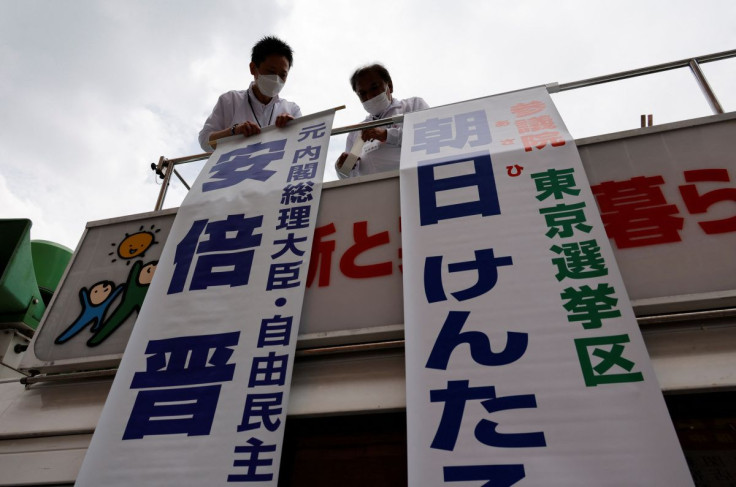Factbox: The Numbers To Watch In Japan's Upper House Elections

Prime Minister Fumio Kishida's Liberal Democratic Party (LDP) is aiming for a convincing win in upper house of parliament elections on Sunday to enhance its ability to push through policies to tackle rising prices and bolster defence.
Below are key facts about the upper house election and important numbers to watch.
WHAT DOES THE UPPER HOUSE DO?
The less powerful of parliament's two chambers, the upper house approves legislation but it can be overridden by the lower chamber in vital matters such as selecting a prime minister.
Upper house elections are typically seen as an interim report card on a government's performance. The next lower house election must be held by late 2025.
Members of the 245-seat upper house serve for six years, with an election for half the seats every three years. A total of 125 seats will be up for grabs on Sunday. That includes a vacant seat that would not normally have been up for election this cycle.
After July 10, the number of upper house seats will be increased by three to 248.
55 SEATS FOR RULING BLOC TO KEEP CONTROL
Kishida has defined victory as maintaining a simple majority in the chamber, or 125 seats, between the LDP and its Komeito junior coalition partner.
As the ruling bloc has a combined 70 seats that are not up for re-election, it needs to win 55 seats, or 44% of those contested on Sunday, to keep control of the chamber and claim victory.
The target is seen as doable for Kishida. A survey by public broadcaster NHK recently showed that 35.6% of those polled supported the LDP, far ahead of the largest opposition Constitutional Democratic Party of Japan's 5.8%.
82 SEATS FOR LDP, THREE OTHERS TO REVISE CHARTER
Amendments to the U.S.-drafted, pacifist constitution, which has never been revised in its 75-year history, require approval by two-thirds of each chamber of parliament and a majority in a referendum.
Four parties that are aiming to revise the charter, or are open to a revision, the LDP, Komeito, the Japan Innovation Party and the Democratic Party for the People, need to gain a combined 82 seats for a two-thirds majority.
29 WOMEN FOR RECORD
In the 2016 upper house election, women accounted for 23.1% of the winners, the highest female representation in percentage terms. If women win 29 seats or more out of the 125 this time, that would be a record.
Japan was ranked 120th in the World Economic Forum's global gender gap report last year, running far behind other advanced economies, due mainly to limited presence of women in political leadership.
48.8% - SECOND-LOWEST TURNOUT IN PREVIOUS ELECTION
Voter turnout was 48.8% in the previous upper house election in 2019, the second-lowest in postwar Japan. In an NHK poll published on Monday, 48% of those surveyed said they would surely vote and 11% said they had cast early votes, little changed from a similar survey ahead of the 2019 election.
Turnout has been particularly low among younger voters in recent elections, in contrast to typically high rates among the elderly, making it hard for the youth to have their voice heard in a rapidly ageing society.
© Copyright Thomson Reuters 2024. All rights reserved.







